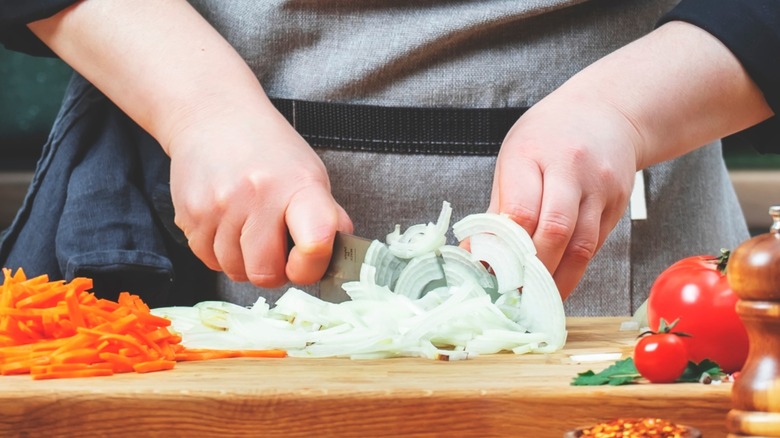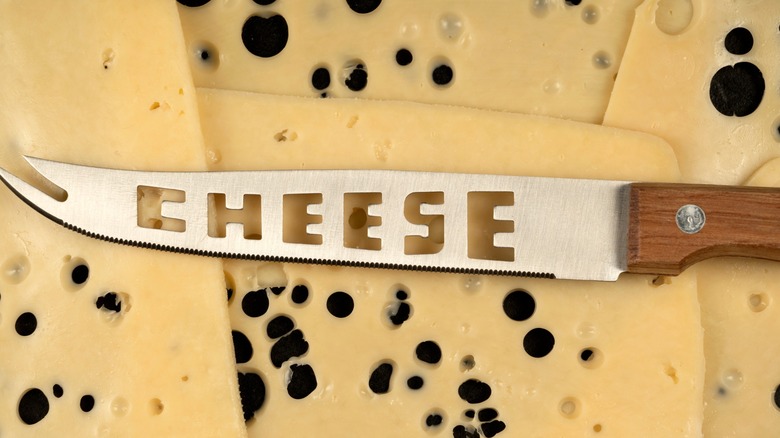There's A Good Reason Some Knives Have Holes
We may receive a commission on purchases made from links.
Of the many types of kitchen knives and their differing features, knives with holes may be some of the most misunderstood. You'd be forgiven for thinking they're just cute little additions or weight-saving measures, but they actually serve a much more important purpose. Those holes are there to make your cooking experience smoother.
Foods like potatoes, apples, and cheese can be a bit tricky when you cut them. They have a habit of clinging to the metal surface of the blade thanks to surface tension. Essentially, the water in the food gets on the knife blade, and those water molecules attract one another, creating what's known as cohesive force. Add starch from veggies like potatoes, and you're essentially creating glue, making it much worse. Adding features that disrupt the suction by creating little air pockets between the food and the blade is supposed to reduce surface contact and therefore surface tension. In addition to fully bored holes, some knives have shallow dimples or scallops known as grantons or kullens or even a hammered metal texture, all with the goal of preventing food from sticking by reducing surface contact with the otherwise smooth blade.
Choosing a knife with holes, grantons, or kullens
If you're concerned with efficient cooking or attractive presentation, these holes can make the difference between torn pieces and clean, even slices. But you don't need a full set of knives with holes, dimples, or hammered metal texture. You can just invest in one or two multitaskers.
One popular example is a santoku, a Japanese-style chef's knife with holes or dimples, such as the ultra-sharp Imarku 7-inch santoku chef's knife on Amazon. There's also a nakiri knife, like the Hoshanho carbon stainless steel knife, which is specifically made for precision vegetable cutting and often has little indentations to stop food from piling up on the blade. But there are others. You can invest in quality cheese knives for better charcuterie boards. They often have perforations or large decorative stamp holes to prevent cheeses from sticking. Similarly, tomato knives may have stamp cuts in addition to serrated edges to reduce sticking and messes. And butcher knives sometimes have holes to reduce friction and aid in safe handling.
So whether you're a fledgling home cook investing in starter knives or an old hand looking to add to your collection, you might consider a knife with one of these distinctive blades for cutting clingy foods like cheese and potatoes. Plenty of people swear they make everyday prep a lot easier.

